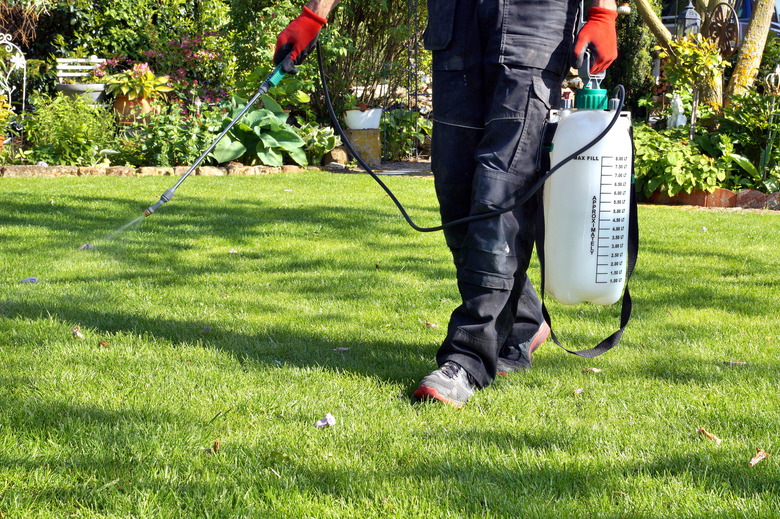Can I Seed After Applying Weed & Feed?
Applying a weed and feed product to your lawn may seem like a perfect way to kill two birds with one stone. Not only are you able to get rid of pesky weeds, but the fertilizer contained in the product will also help the grass thrive. Weed and feed products aren't ideal for all situations, though, and may cause some problems if you plan to reseed the lawn soon after application.
What Is Weed & Feed?
What Is Weed & Feed?
As the name implies, weed and feed products contain both a fertilizer and an herbicide to control weeds while feeding the surrounding grass. If the lawn has grass that is already established, this works well. The product should be applied a few weeks after the final frost once the grass and weeds are visibly growing because applying the product on dormant weeds will have no effect. Apply it periodically throughout the rest of the year as well to keep weeds under control.
Most weed and feed products come in granule form, and you should apply them to damp grass to ensure activation. For best results, mow two to four days before application and apply weed and feed products when no additional rain is expected for at least 48 hours. After application, do not mow the treated grass for at least seven days to allow the herbicide time to work.
Warning
- Always wear hand and eye protection when spreading weed and feed products to prevent possible chemical burns or other injuries to the eyes or sensitive skin.
- Wear rubber or chemical-resistant boot or shoe covers as well as appropriate gloves.
- Keep people and pets off of the newly treated areas to prevent accidental poisoning or other illness.
- Many weed and feed products contain pesticides like 2,4-D, dicamba, and MCPP. These can kill beneficial insects and have been linked to serious health issues in humans.
Hindering New Growth
Hindering New Growth
Weed and feed products work by preventing new growth, effectively stopping weed seeds from sprouting and newly sprouted weeds from flourishing. There are many products available and there are differences in the way they take out seeds. Some (called pre-emergent herbicides) are applied before the weed seeds germinate; others (post-emergent herbicides) kill weeds already present.
The herbicides used aren't specific enough to only target weeds, however; they'll have the same negative effect on grass seeds and any new grass growth. It can take up to four weeks for the herbicide effect to fade, so sowing grass soon after applying weed and feed is likely futile because new grass won't be able to grow.
When to Sow Seed
When to Sow Seed
If you must sow grass seed after applying weed and feed, wait at least four to six weeks before doing so to ensure the herbicide won't prevent the seeds from sprouting.
Tip
Different grass varieties thrive when planted at different times of the year. If you have a specific variety in of grass mind, find out the most favorable time to sow it to ensure the best results.
Ideally you should sow seeds in the fall far enough in advance of frost that the new grass will have several weeks to start growing before going dormant. You can also sow grass seed in the early spring, though if you do so you should hold off on applying weed and feed for at least four to eight weeks to ensure it doesn't damage the young grass.
